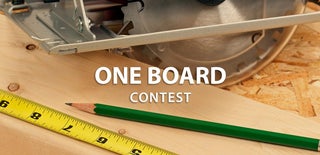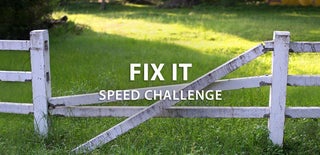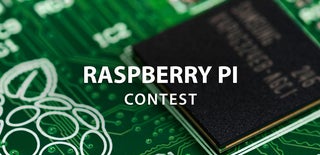The Easiest Way to Memorize the Algorithms of Rubik's Cube
550,801
137
20
Introduction: The Easiest Way to Memorize the Algorithms of Rubik's Cube
Learn to solve the Rubik’s cube in no time by taking advantage of your visual memory. You’ve probably been playing with Rubik’s cube and wondering how to solve it. Eventually, you may have succeeded by following an online tutorial. While there are several methods to solve the 3x3 cube, these techniques usually consist of a number of algorithms that look something like this: T R Ti Ri Ti Fi T F.
Some people can memorize such sequences without difficulty. But what about the rest of us who are better at remembering peoples faces rather than their names? The good news is that the algorithms can be converted into easy to memorize graphics so that you don’t need to spend days learning the sequences by heart!
Step 1: Algorithm Basics - Turn Letters Into Symbols
Every plane of the cube can be rotated either clockwise or counterclockwise in relation to the rest of the cube. As you hold the cube in front of you, these planes are identified as front (F), top (T), right (R), left (L), back (B), and down (D). Each letter indicates a 90 degrees clockwise rotation of the corresponding plane. Counterclockwise, or inverted, rotation is indicated by adding an "i" to the letter: Fi, Ri, etc.
Here's a suggestion how you can use symbols (e.g. arrows) instead of letters to indicate specific moves. In the following steps, you’ll see how you can join several symbols to visually encode an algorithm by forming a picture.
Step 2: The Basal Layer
First, some preparation. Start by solving one layer, say white. In fact, it's a good training to do it without memorizing any algorithms. Just start by making a cross around the white central piece by placing edge peaces so that they mach the neighbouring center pieces. Afterwards, use these edge pieces to "fetch" the corner pieces into their places. Feel free to consult another source on solving the first layer. A good starting point could be here: http://youtu.be/tYmtdFM1Zwk.
Step 3: First Algorithms
Now, you'll want to turn the cube upside down so that the white layer is on the bottom in order to start solving the middle layer. You do this by "rotating" the edge pieces into their places one at a time using these algorithms. Remove the piece first by the same method if it is already in place but not oriented correctly.
Step 4: Making a Cross on the Top Layer
Orient the cube according to the situation of the yellow edge pieces, as shown. Then, keep doing the algorithms until you have made the yellow cross.
Step 5: Completing the Color of the Top Layer (only the Color Itself)
Here, pay attention to the orientation of the cube, too. It depends on how many top corner pieces are yellow. Repeat the algorithm until the entire top of the cube is yellow. You'll fix the orientation of the corners and the edges in the following steps.
Step 6: Solving the Corner Pieces
The goal here is to solve the four top corners. Before you begin, two corner pieces have to be placed correctly in place as A&B or A&D or B&C by rotating the top layer.
Step 7: Solving (rotating) the Edge Pieces
You're almost done. At this stage, one of the edge pieces on the top layer will probably be oriented correctly. You have to place this piece away from you and then rotate the three remaining edge pieces either clockwise or counterclockwise.
Congratulations, you should be done :) Feel free to modify the visual symbols according to your preferences, and let me know what you think in the comments.
Enjoy your new skills!

Participated in the
First Time Author Challenge
1 Person Made This Project!
 DaeshinK made it!
DaeshinK made it!
Recommendations
We have a be nice policy.
Be positive and constructive.


















20 Comments
1 year ago
Very nice, memorizing the algorithms by means of symbols!
I have build further upon this concept, adding the open and filled squares as the cw and ccw bottom turns, plus 'double turns', i.e. for example turning the right + middle layers together cw (instead of turning left ccw), plus diamonds to turn the middle layer (in x direction). Finally, to avoid confusing crossings and consecutive R and L' (like in step 7), I also added the usage of a dashed line (without arrow). Doing so I have made an overview of all 4LLL algorithms, enabling me to memorize all of the algorithms I wanted to learn. I am happy I found this website!
By the way, I used the apostrophe instead of the i notation.
3 years ago
This was a huge help to me, thank you so much!
I was using the official Rubik's solution from their website and this was the closest to that that I found.
I was "thinking" of my cube differently though, so instead of modifying my thought process I modified your method to suit me better, just thought I'd share in case it's of any use to anyone else.
Thanks again, really great instructable!
Reply 2 years ago
Hi James,
could you send me your notes' pics. It would be helpful.
My ID: ramnido1208@gmail.com
5 years ago
So, my first prototype is ready and you can try it out here:
http://cubing.bplaced.net/
If you put an algorithm in the input field and hit enter or space, it should show you a pretty picture, similar to the above ones.
It looks strange, if you put in random algorithms, but most algorithms, that you really want to use should look not that bad.
Reply 4 years ago
I posted this page and your tool to reddit:https://www.reddit.com/r/Cubers/comments/726lq3/th...
There was some feedback regarding the use of R2'. Adding the inverse symbol to the 2 means that you change the symmetry of the picture and make it easier to remember.
More feedback would be that it would be nice if the graph was generated as a picture so that people can save it. Otherwise you have to use an image snipping tool for each algorithm, which becomes very time consuming to save.
Reply 5 years ago
Great work! I like the interface, which looks intuitive and easy to use. Good illustrations of the moves too. What are your ideas for further development?
Reply 5 years ago
There is an Interface? I just threw some buttons together.
Most of my time went into programming the functions to generate the illustrations.
At the moment, I am working on an android cubing app. It will include algorithms for the beginner method, OLL and PLL.
Then I have already implemented a timer and am currently adding a saving machanism, so you can look up your progress as a speed cuber.
I wanted to generate algorithms to scramble the cube and show images with the arrow illustrations, but they would be to small and most of the time look strange.
By the way, did you come up with this idea yourself or are there somewhere similar ideas, on how to make cubing algorithms easier to remember?
Reply 5 years ago
The idea was purely mine, first jotted down on a piece of paper. I simply had to come up with something visual to be able to memorize the (beginner method) algorithms. I've also tried searching the Internet for something similar, but there were only tons of letter sequences available.
I think an app would be really handy to have around. I could suggest including a few complete lists of algorithms of different methods in the app. E.g. as flashcards. A short reference to this Instructable would be nice too :)
4 years ago
I love your idea and I think it's great. I hope to use it to learn and remember more easily!
However, I think you should rather stick to the conventional letters that the rest of the community use. T should be U for Up, and B should be D for Down. Would you consider updating your diagrams?
I see that ViktorE5 made an online tool (which you saw and replied to), so you have already seen that convention before.
4 years ago
Solve Rubik's cube - ONLY 4 STEPS TO REMEMBER (RU'R'U) !!!
No need to endless repeat same steps!
No algorithms, no notations, no memorization!
https://youtu.be/4NPEpVZc9m0
You can download application (see link in description) and practice!
5 years ago
~bro axisent
5 years ago
khgfdsfghjkl;/.,mngfdsawe567uikl,m nvcxzxsdertyuil;.mnbvcxzsdetu7ikl,m nbvcxswe4567oikm nvcxdser56789'? cxzse5789p;. xzsertuio;/ xzse7ik mdfyuikl,cxdtyuk,m dfgjukl, xdtyuik, cfgtyjuk,
5 years ago
I find it incredibly interesting that after all these decades of brainpower put into Rubik's Cube study, algorithm-production and intense competition training, nobody else (that I can find) thought to recommend a visual/pictorial memorization method like this for beginners.
I think this speaks volumes about the disconnect between rigid mathematical/procedural thinking and creative thinking, that is produced by educating methodologies which favor branching students off into overly narrow/specialized cells.
Reply 5 years ago
Thank you! I'm glad you find this method interesting.
5 years ago
I like this idea to remember the algorithms, but it is a waste to only use it for the beginner method. The only problem I have is that you have to draw all the algorithms down, for example for PLL and OLL later on. Since I didn't find any other source for this kind of Pictures, I decided to write my own program, that can translate algorthms to vector images.
If you want to use it for every algorithm there is, you need to extend the symbols slightly, what I had to do as well. For D i thought to use a square and for 2-layer turns I think arrows with 2 lines and for whole cube turns arrows with 3 lines would be a good idea.
When I have a website or a free App, I will probably post it here, so you can try it out. I already a working prototype, so it would be a waste to not finish it.
Reply 5 years ago
That sounds cool. It would be obvious to extend this approach to other algorithms. It's true that the original drawings were made by hand, and an automatic converter would be a great tool! Looking forward to see the result.
6 years ago
This so easy to remember it helps me a lot in kinda to get better score so ye that you a lot!
6 years ago on Introduction
much easier to remember the vector shapes... thanks this helped!
6 years ago on Introduction
Interesting way to visualize the steps. I'll admin, while I didn't memorize the algorithms in this way specifically, I definitely had to turn the cube rotations into physical representations in my head. It's cool to see that some of the symmetry I noticed while solving the cube can be graphically displayed in this way. Nice work!
7 years ago on Introduction
This is so cool, I love all your illustrations they're super easy to understand!